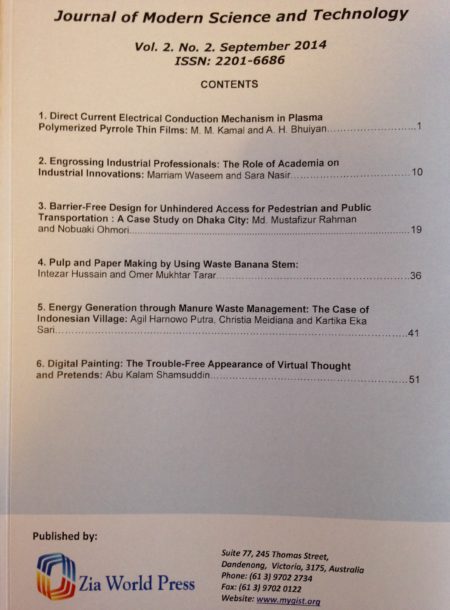Journal of Modern Science and Technology
Vol. 5. No. 1., September 2017, Pages: 66-79
Implementing SWOT-FTOPSIS Methods for Selection of the Best Strategy: Pharmaceutical Industry in Bangladesh
Md. Ariful Islam, Sajib Kumar Sikder and Md. Sahab Uddin
Pharmaceutical industry in Bangladesh is one of the most developing industrial sectors. As a promising sector, pharmaceutical industry needs some empirical studies for its future development. In this research work, it is tried to analyze the current condition of the pharmaceutical sector and selects different strategies that are necessary for the development of this sector. The SWOT analysis is done to find out the strength, weakness, opportunity and threat (four factors) of the pharmaceutical sector; that may affect strategic planning and decision-making. Then four sub factors are selected for each of the four factors. These sub factors are used to form the SWOT matrix which gives four strategies such as SO (strengths-opportunities) strategies, WO (weaknesses-opportunities) strategies, ST (strengths-threats) strategies and WT (weaknesses-threats) strategies. After this, fuzzy TOPSIS method is implemented to find out the best strategy. According to the concept of the fuzzy TOPSIS in multiple-criteria group decision making (MCGDM) problem, an index of closeness coefficient (CC) is defined to determine the ranking order of all strategies by calculating the distance to the both fuzzy positive ideal solution and fuzzy negative ideal solution. It is found that WO (weaknesses-opportunities) strategy possess the higher closeness coefficient which makes it most appropriate strategy for the pharmaceutical industry in Bangladesh.

